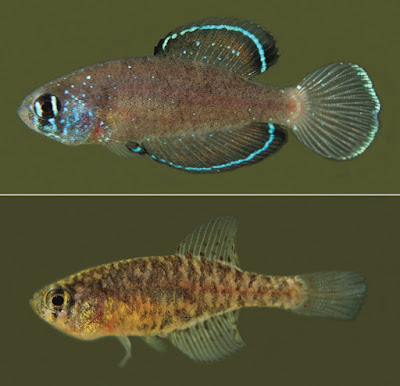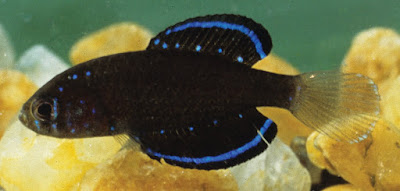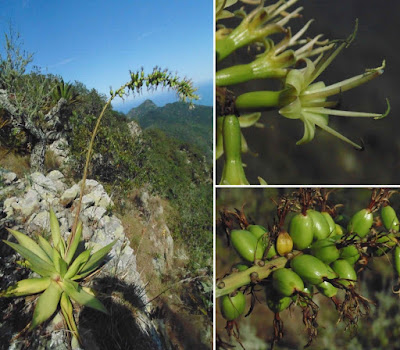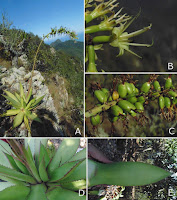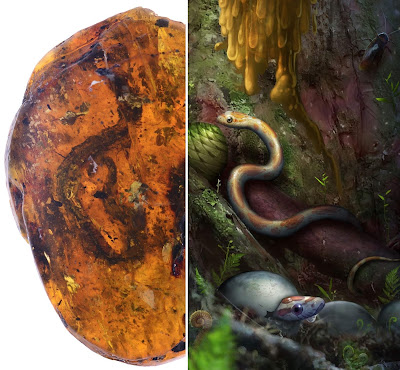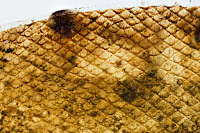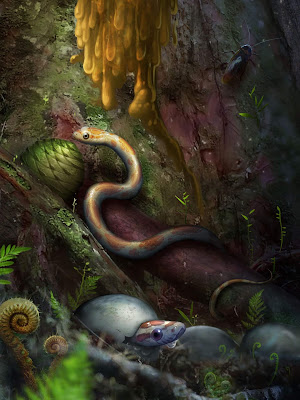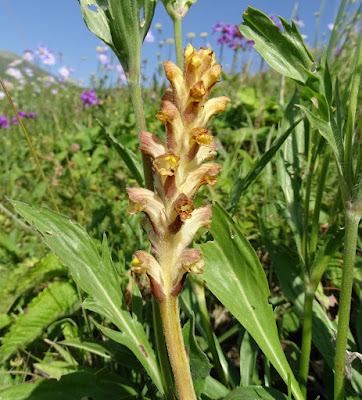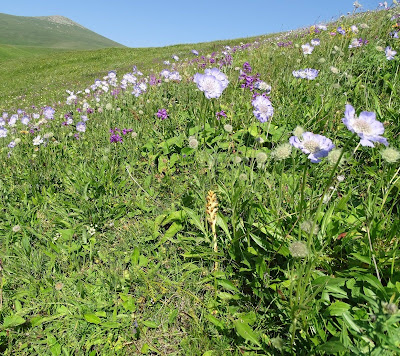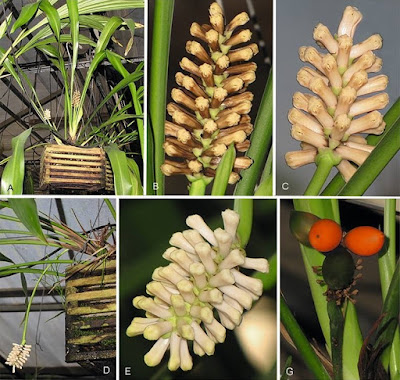[Most Recent Entries] [Calendar View]
Thursday, July 19th, 2018
| Time | Event | ||||||||
| 1:58a | [Ichthyology • 2018] Spectrolebias gracilis • A New Miniature Cryptic Species of the Seasonal Killifish Genus Spectrolebias (Cyprinodontiformes, Aplocheilidae) from the Tocantins River basin, central Brazil
Abstract The miniature seasonal killifish Spectrolebias costae, first described for the middle Araguaia River basin, has been also recorded from two areas in the middle Tocantins River basin, from where male specimens exhibit some differences in their colour pattern. Analyses directed to species delineation (GMYC and bPTP), using a fragment of the mitochondrial gene COI, strongly support two species, S. costae from the Araguaia River basin and a new species from the Tocantins River basin. Spectrolebias gracilis sp. n. is described on the basis of specimens collected from two localities separated by about 530 km, Canabrava River floodplains near Alvorada do Tocantins and Tocantins River floodplains near Palmeirante. Field inventories were unsuccessful in finding additional populations in the region, which is attributed to the high environmental degradation, including several large dams that have permanently inundated typical killifish habitats. Spectrolebias gracilis is member of a clade also including S. costae, S. inaequipinnatus, and S. semiocellatus, diagnosed by having the dorsal and anal fins in males with iridescent dots restricted to their basal portion, caudal fin in males hyaline, and caudal-fin base with two pairs of neuromasts. Within this clade, a single miniaturisation event is supported for the most recent common ancestor of the subclade comprising S. costae and S. gracilis, which differ from other congeners by reaching only about 20 mm standard length as maximum adult size. Key Words: Amazon, Biodiversity conservation, Integrative taxonomy, Miniaturization, Molecular taxonomy, Species delimitation Taxonomic accounts Spectrolebias gracilis sp. n. Diagnosis: Spectrolebias gracilis is member of a clade endemic to the Araguaia-Tocantins River System, also including S. costae, S. semiocellatus Costa & Nielsen, 1997 and S. inaequipinnatus Costa & Brasil, 2008, and morphologically diagnosed by: dorsal and anal fins in males with iridescent dots restricted to the basal portion of fins (vs. scattered over the whole fin), caudal fin in males hyaline (vs. variably coloured, usually dark red or grey), caudal-fin base with two pairs of neuromasts (vs. one). Spectrolebias gracilis is similar to S. costae and distinguished from S. semiocellatus and S. inaequipinnatus by having dorsal fin rounded in males (vs. pointed), dark brown to black pigmentation on the flank in males (vs. light brownish grey), and a subdistal bright blue stripe on the dorsal and anal fins in males (vs. subdistal bright blue absent). Spectrolebias gracilis differs from S. costae by the iridescent light blue colour pattern in males, comprising the presence of 10–12 small blue spots irregularly arranged on opercle, surrounded by diffuse blue iridescence (Fig. 4; vs. 6–8 small blue spots, usually arranged in three vertical series, contrasting with dark brown colour ground, Fig. 3) and one or two series of dots irregularly arranged on the basal portion of the dorsal fin (Fig. 4; vs. blue dots arranged in single longitudinal row close to fin base, Fig. 3). ....
Etymology: From the Latin gracilis, meaning thin, referring to the thin body of the small-sized new species. Distribution and habitat: Spectrolebias gracilis is known from temporary pools of two localities of the middle Tocantins River basin, central Brazil (Fig. 6). In both localities pools were shallow, about 80 cm in deeper places, and densely occupied by aquatic vegetation.
Wilson J. E. M. Costa and Pedro F. Amorim. 2018. A New Miniature Cryptic Species of the Seasonal Killifish Genus Spectrolebias from the Tocantins River basin, central Brazil (Cyprinodontiformes, Aplocheilidae). Zoosystematics and Evolution. 94(2): 359-368. DOI: 10.3897/zse.94.28085 | ||||||||
| 2:01a | [Herpetology • 2018] Selvasaura brava • Systematics of Neotropical Microteiid Lizards (Gymnophthalmidae, Cercosaurinae), with the Description of A New Genus and Species from the Andean Montane Forests
Abstract Cercosaurine lizards (subfamily Cercosaurinae of the family Gymnophthalmidae) represent a substantial component of the reptile fauna in the Neotropics. Several attempts have been made to reconstruct the phylogenetic relationships within this group, but most studies focused on particular genera or regions and did not cover the subfamily as a whole. In this study, material from the montane forests of Peru was newly sequenced. In combination with all cercosaurine sequences available on GenBank, an updated phylogeny of Cercosaurinae is provided. Monophyly was not supported for three of the currently recognised genera (Echinosaura, Oreosaurus, and Proctoporus). The genus Proctoporus is formed by five monophyletic groups, which should be used in future taxonomic revisions as feasible entities. Recognition of two previously identified undescribed clades (Unnamed clades 2 and 3) was supported and yet another undescribed clade (termed here Unnamed clade 4), which deserves recognition as an independent genus, was identified herein. Selvasaura brava, a new genus and new species of arboreal gymnophthalmid lizard is described from the montane forests of the Pui Pui Protected Forest, Provincia de Chanchamayo, Región Junín, Peru. The new species is characterised by its small size (SVL 42.1–45.9 mm), slender body, smooth head shields, presence of paired prefrontal shields, fused anteriormost supraocular and anteriormost superciliary shields, transparent not divided lower palpebral disc, slightly rugose subimbricate rectangular dorsal scales in adults (slightly keeled in juveniles), distinctly smaller but non-granular lateral scales, smooth squared to rectangular ventral scales, and hemipenial lobes large, distinct from the hemipenial body. Phylogenetic affinities of the new genus to the other cercosaurine genera, as well as basal phylogenetic relationships between the other cercosaurine genera remain unresolved. Keywords: Andes, arboreality, phylogeny, reptile diversity, Selvasaura gen. n., Selvasaura brava sp. n., taxonomy Taxonomy Family Gymnophthalmidae Fitzinger, 1826 Subfamily Cercosaurinae Gray, 1838 Genus Selvasaura gen. n. Unnamed clade 3 (in Torres-Carvajal et al. 2016) Type species: Selvasaura brava sp. n. Diagnosis: Phenotypic synapomorphies are not known for this genus. Morphologically, Selvasaura gen. n. can be distinguished from all other genera of Cercosaurinae by the combination of the following characters: lower palpebral disc transparent, not divided (divided in Andinosaura, Euspondylus, Gelanesaurus, Oreosaurus, Petracola, Riama, and most Anadia and Placosoma species; opaque in Pholidobolus); dorsal scales slightly rugose (smooth in Anadia; keeled in Cercosaura; strongly keeled and tuberculate in Echinosaura, Gelanesaurus, Neusticurus, Potamites; minute tubercles on posterior dorsal scales in Placosoma); lateral scales distinctly smaller than dorsal scales (lateral scales not distinctly reduced in size in Macropholidus); lateral scales adjacent to ventrals non-granular (granular in Proctoporus) (see e.g., Oftedal 1974; Cadle and Chuna 1995; Altamirano-Benavides et al. 2013; Kok et al. 2013; Torres-Carvajal and Mafla-Endara 2013; Echevarría et al. 2015; Borges-Nojosa et al. 2016; Chávez et al. 2017; Sánchez-Pacheco et al. 2017b). Genetically, the genus is differentiated from the other cercosaurines by distances given in Table 3 and 4. Definition: (1) head shields smooth; (2) frontoparietal and parietal shields paired; (3) frontonasal, frontal and interparietal shields single; (4) prefrontal shields present; (5) lower palpebral disc transparent, not divided; (6) loreal shield present; (7) scale organs on labials present; (8) anteriormost supraocular and anteriormost superciliary shields fused; (9) dorsal surface of the tongue covered by scale-like papillae; (10) nuchal scales smooth; (11) dorsal scales rectangular, slightly rugose; (12) ventral scales squared to rectangular, smooth; (13) limbs pentadactyl, digits clawed; (14) femoral pores present in males, absent in females; (15) hemipenial lobes large, distinct from the hemipenial body. Content: Selvasaura brava sp. n. and undescribed species of Unnamed clade 3 (sensu Torres-Carvajal et al. 2016) whose formal descriptions are underway (see Torres-Carvajal et al. 2016). Distribution: Peru: Región Junín, Provincia de Chanchamayo, Pui Pui Protected Forest (Selvasaura brava sp. n.); Región San Martin, Provincia Mariscal Cáceres, Laurel (Cercosaurinae sp. 3; Torres-Carvajal et al. 2016). Ecuador: Provincia de Zamora Chinchipe, El Pangui (Cercosaurinae sp. 3; Torres-Carvajal et al. 2016); Provincia de Napo, Wildsumaco Wildlife Sanctuary (Cercosaurinae sp. 3; Torres-Carvajal et al. 2016). Etymology: The generic name Selvasaura is derived from the Spanish noun ‘selva’ (forest) and the Greek noun σαύρα (lizard; saura is the feminine form) and refers to the habitat (montane rainforest) of the type species.
Selvasaura brava sp. n. Suggested English name: Brave forest microtegu Suggested Spanish name: Microtegu selva brava Diagnosis: A small gymnophthalmid (SVL 42.1–45.9 mm, n = 4), which can be characterised by the following combination of characters: 1) body slender, slightly depressed, maximum SVL 45.9 mm in males, 42.1 mm in a single female; 2) head relatively short, pointed, about 1.5 times longer than wide; 3) ear opening distinct, moderately recessed; 4) nasals separated by undivided frontonasal; 5) prefrontals, frontal, frontoparietals, parietals, postparietals and interparietal present; 6) parietals slightly longer than wide; 7) supraoculars four, anteriormost fused with anteriormost superciliar; 8) superciliar series complete, consisting of four scales; 9) nasal shield divided above and below or behind the nostril; 10) loreal separated or in contact with second supralabial; 11) supralabials seven; 12) genials in four pairs, first and second pair in contact; 13) collar present, containing 9–11 enlarged scales; 14) dorsals in 33–36 transverse rows, rectangular, nearly twice as long as wide, subimbricate, rugose in adults, slightly keeled in juveniles; 15) ventrals in 22–25 transverse rows, squared to rectangular, smooth, juxtaposed; 16) scales around mid-body 32–34; 17) lateral scales at mid-body reduced in 4–7 lines; 18) limbs pentadactyl, all digits clawed, forelimb reaching anteriorly to third supralabial; 19) subdigital lamellae under Finger IV 14–16, under Toe IV 18–22; 20) femoral pores in males 7–9; 21) four large preanal plate scales; 22) tail about 1.5–1.7 times longer than body (in juveniles); 23) caudals subimbricate, rugose to slightly keeled dorsally in adults, slightly keeled in juveniles, smooth ventrally; 24) lower palpebral disc transparent, undivided; 25) in life, dorsal surface of head, body and limbs light brown with fine dark brown speckling, dorsal surface of tail light brown with a reddish tint or reddish-brown markings; a tan or yellowish brown vertebral stripe bordered laterally by dark brown, vertebral stripe extends on head anteriorly and on tail caudally (inconspicuous in the female); a narrow dirty white to tan dorsolateral line extending on each side from above the tympanum to pelvic region (discontinuous caudally from the level of forelimbs in adults, reaching posterior edge of orbit in some individuals); a narrow dirty white to tan stripe running from above the orbit across parietals and first postparietals up to the neck (connected with the dorsolateral line in some individuals); a narrow white stripe extending from below of orbit to insertion of forelimbs (bordered dorsally by black in juveniles and some adults); minute ocelli-like white spots on flanks (most conspicuous at forearm insertion, absent in some adults); ventrolateral parts of flanks whitish brown; throat and belly creamy white with fine dark grey speckling inside the individual scales (yellowish white with black speckling in juveniles); ventral surfaces of limbs, anal area and tail yellowish white in males and juveniles, white in the female; iris tan with orange tint in males, tan in the female. Etymology: The species epithet brava is derived from the Spanish adjective bravo (brave, courageous, wild; brava the feminine form) and refers to Río Bravo, the largest river in the area of occurrence of the new species, as well as to the fearless nature of the lizard to share shelter with people. Distribution, natural history, and threat status: Selvasaura brava sp. n. is known from two localities lying at the northeastern border of the Pui Pui Protected Forest, ca. 18 km (straight airline distance) NW of the town of Satipo (Fig. 1). Both localities are located in the valley of the tributary of Río Bravo (on opposite banks of the tributary) about 500 m (straight distance) from each other. The valley and its slopes are covered by a primary montane rainforest characterized by 15–20 m high canopy and frequent occurrence of bromeliads, ferns, and epiphytic mosses (see also Lehr and Moravec (2017). All specimens of S. brava sp. n. were collected during the day within roofs of provisional camp shacks consisting of dried palm leaves and built by locals on small forest clearings (Fig. 8; MorphoBank picture: M485681). The roofs of the shacks were placed on 1.5–4 m pillars made of tree trunks and stood in an open space fully exposed to sun. The activity of all observed specimens seemed correlated with the intensity of solar radiation. During the sunny hours, the animals emerged from their shelters in the leaf layer, climbed and basked on the roof surface and searched for prey. As agile climbers, the lizards were able to climb up thin vertical tree trunks and jump between the palm leaves. These observations indicate that S. brava sp. n. represents an arboreal heliothermic species. Other gymnophthalmid species found at the type locality in sympatry with S. brava sp. n. included Potamites sp. (not included in the genetic analyses), which inhabited banks of small forest brooks, and Proctoporus sp. 4 (sensu this publication, Fig. 3) collected on the ground in the open clearing. With respect to the sparse data available, we suggest classifying S. brava as “Data Deficient” according to the IUCN red list criteria. Jiří Moravec, Jiří Šmíd, Jan Štundl and Edgar Lehr. 2018. Systematics of Neotropical Microteiid Lizards (Gymnophthalmidae, Cercosaurinae), with the Description of A New Genus and Species from the Andean Montane Forests. ZooKeys. 774: 105-139. DOI: 10.3897/zookeys.774.25332 | ||||||||
| 2:04a | [Botany • 2018] Agave maria-patriciae (Polycephalae Group: Asparagaceae) • A New Species from Central Coastal Veracruz, Mexico
Abstract Agave maria-patriciae Cházaro & Arzaba is described and illustrated here as a new species from the central coast of the state of Veracruz in Mexico. It belongs to the subgenus Littaea and Polycephalae group, which contains tropical and subtropical species from the American continent. Agave maria-patriciae is closely related to A. pendula, but differs from the latter by having smaller rosettes, shorter and suberect stems and smaller and subsessile flowers. It is only known from a small population in the oak forest from the mountains of Sierra de Monte de Oro in the municipality of Alto Lucero in eastern Mexico. Keywords: Agave, endemic, new species, Polycephalae, Veracruz, Monocots
Agave maria-patriciae Cházaro & Arzaba sp. nov. Agave maria-patriciae is most similar to A. pendula by sharing lanceolate to oblong leaves with a central yellow stripe, but it differs in its shorter leaves, stems and floral scape; presence of continuous reddish margins along the leaves, thicker terminal spine and larger denticles, its smaller and succulent flowers with reflexed and not broadly cucullate tepals and subsessile capsules. Type:— MEXICO. Veracruz: municipality of Alto Lucero, summit of Cerro La Bandera, NE of La Yerbabuena village, 660 m, 07 January 2016 (fl. & fr.), C. Arzaba 451 et al. (holotype XAL!; isotypes CHAPA!, MEXU!). .... Etymology:— The species name is dedicated to Mrs. María Patricia Hernández, wife of the second author, who in the 1980s and early 1990s was a great companion in numerous field trips even to remote areas. As a result, several hundreds of botanical specimens are labeled as “M. Cházaro & P. Hernández”, deposited in the main herbaria of Mexico and the USA. She also mounted hundreds of exsiccata at the WIS and IBUG herbaria, as well as coauthored several papers on succulent plants of Mexico. Carlos Arzaba-Villalba, Miguel Cházaro-Basáñez and César Viveros-Colorado. 2018. Agave maria-patriciae (Polycephalae Group: Asparagaceae), A New Species from Central Coastal Veracruz, Mexico. Phytotaxa. 360(3); 263–268. DOI: 10.11646/phytotaxa.360.3.6 Resumen: Agave maria-patriciae Cházaro & Arzaba es descrita e ilustrada como una nueva especie de la costa central del estado de Veracruz en México. Pertenece al subgénero Littaea y al grupo Polycephalae, el cual contiene especies tropicales y subtropicales del continente americano. A. maria-patriciae está estrechamente relacionado con A. pendula pero difiere de ésta última al poseer rosetas más pequeñas, tallos más cortos y suberectos y flores de menor tamaño y subsésiles. Solo se conoce de una pequeña población en bosque de encino en la Sierra de Monte de Oro, en el municipio de Alto Lucero, en el oriente de México. Palabras-clave: Agave, endémica, nueva especie, Polycephalae, Veracruz | ||||||||
| 7:10a | [Paleontology • 2018] Xiaophis myanmarensis • A mid-Cretaceous Embryonic-to-neonate Snake in Amber from Myanmar
Abstract We present the first known fossilized snake embryo/neonate preserved in early Late Cretaceous (Early Cenomanian) amber from Myanmar, which at the time, was an island arc including terranes from Austral Gondwana. This unique and very tiny snake fossil is an articulated postcranial skeleton, which includes posterior precloacal, cloacal, and caudal vertebrae, and details of squamation and body shape; a second specimen preserves a fragment of shed skin interpreted as a snake. Important details of skeletal ontogeny, including the stage at which snake zygosphene-zygantral joints began to form along with the neural arch lamina, are preserved. The vertebrae show similarities to those of fossil Gondwanan snakes, suggesting a dispersal route of Gondwanan faunas to Laurasia. Finally, the new species is the first Mesozoic snake to be found in a forested environment, indicating greater ecological diversity among early snakes than previously thought.
Fig. 4. Light photographs of probable snake shed skin (DIP-V-15104). Systematic paleontology Squamata Oppel, 1811 Serpentes Linnaeus, 1758 Xiaophis myanmarensis gen. et sp. nov. Holotype: DIP-S-0907 [Dexu Institute of Palaeontology (DIP)], articulated postcranial skeleton (Total Length = 47.5 mm), ~97 vertebrae and ribs, and integument. Type locality/horizon: Angbamo site, Tanai Township, Myitkyina District, Kachin Province, Myanmar (98.8 ± 0.6 Ma ago; earliest Cenomanian). Etymology: “Xiaophis”—Xiao from the Chinese word for “dawn” and in honor of Xiao Jia, the amber specialist who donated the specimens to the DIP, Chaozhou, China; ophis, Greek for snake; and “myanmarensis” in recognition of Myanmar.
Lida Xing, Michael W. Caldwell, Rui Chen, Randall L. Nydam, Alessandro Palci, Tiago R. Simões, Ryan C. McKellar, Michael S. Y. Lee, Ye Liu, Hongliang Shi, Kuan Wang and Ming Bai. 2018. A mid-Cretaceous Embryonic-to-neonate Snake in Amber from Myanmar. Science Advances. 4(7); eaat5042. DOI: 10.1126/sciadv.aat5042 Oldest baby snake fossil, 99 million years old, discovered in Myanmar usat.ly/2uxZm2W via @usatoday First Baby Snake From Dinosaur Era Found in Amber on.NatGeo.com/2NV0zcJ via @NatGeoScience Rare baby snake fossil found in amber from Age of Dinosaurs discoverycampus.com/2018/07/18/rare-baby-s | ||||||||
| 9:00a | [Botany • 2018] Orobanche javakhetica (Orobanchaceae) • A New Species from the Caucasus (Armenia)
Abstract Orobanche javakhetica (Orobanchaceae) is described as a new, probably endemic, species from the Lesser Caucasus in Armenia. It grows on a subalpine meadow, where it parasitises Lomelosia caucasica (Dipsacaceae). The newly-described species is very characteristic and different from other known Orobanche, however some morphological similarity may exist with species from the Orobanche subsect. Curvatae, particularly with species of the Orobanche series Krylowianae. A detailed description, illustrations, a comparison with the most similar species with identification key, and phylogenetic analysis are provided. Keywords: Lomelosia caucasica, Javakheti range, Lesser Caucasus, holoparasites, taxonomy, Orobanche, plant parasites, Eudicots
Orobanche javakhetica Piwow., Ó. Sánchez & Moreno Mor., sp. nov. Etymology:― The epithet ‘javakhetica’ derives from the name of the Javakheti mountain range (Dzhavakheti range), where the new species was discovered.
Renata Piwowarczyk, Óscar Sánchez Pedraja, Gonzalo Moreno Moral , Magdalena Denysenko-Bennett and Grzegorz Góralski and Dagmara Kwolek. 2018. Orobanche javakhetica (Orobanchaceae): A New Species from the Caucasus (Armenia). Phytotaxa. 360(2); 135–144. DOI: 10.11646/phytotaxa.360.2.5 Researchgate.net/publication/326377056_Orobanche_javakhetica_a_new_species_from_the_Caucasus_Armenia Orobanche javakhetica Piwow., Ó. Sánchez & Moreno Mor. - nowy gatunek dla nauki z Armenii. Dzisiaj się ukazała publikacja w Phytotaxa, mapress.com/j/pt/article/view/phytotaxa.360.2.5 Rośnie na około 2230 m n.p.m. i pasożytuje na Lomelosia caucasica (Dipsacaceae). Nazwę nadałam od pasma górskiego Javakheti, gdzie został znaleziony. Renata Piwowarczyk | ||||||||
| 9:01a | [Botany • 2018] Tupistra siphonantha (Asparagaceae) • A New Species from Lao P.D.R. with A Simple Pistil
Summary Tupistra siphonantha N. Tanaka, Vislobokov & D. P. Hannon, a new species from central Laos is described and illustrated. It is distinguishable from all other members of Tupistra mainly by the synchronously blooming flowers, clavate-tubular, cream-white or fulvous perianth with strongly incurved segments, latrorse anthers with thecae separated by a round (papillary) projection from the perianth, and very small, simple pistil bearing a single ovule in the locule. It is also unique in having ellipsoid, smooth, orange fruits that are similar to those of Rohdea. The taxonomic position and features of the flowers and fruits of this species are briefly discussed. A key to the species of Tupistra reported from Laos is also provided. Key Words: Affinity, Aspidistreae, Convallarieae, Indochina, lithophyte, new species, Rohdea Tupistra siphonantha N. Tanaka, Vislobokov & D. P. Hannon sp. nov. Type: Laos, Khammouane Province, D. P. Hannon s.n. (holotype HNT!; isotype K!). Recognition: Differs from all other members of Tupistra by the synchronously blooming flowers, clavate-tubular, cream-white or fulvous perianths with strongly incurved segments, latrorse anthers with thecae prominently separated by a round protrusion from the perianth, and very small, simple pistil bearing a single ovule in the locule. .... Etymology: The specific epithet refers to the tubular flowers. Noriyuki Tanaka, Dylan P. Hannon and Nikolay A. Vislobokov. 2018. Tupistra siphonantha (Asparagaceae), A New Species from Lao P.D.R. with A Simple Pistil. Kew Bulletin. 73:32. DOI: 10.1007/s12225-018-9754-5 |
| << Previous Day |
2018/07/19 [Calendar] |
Next Day >> |
